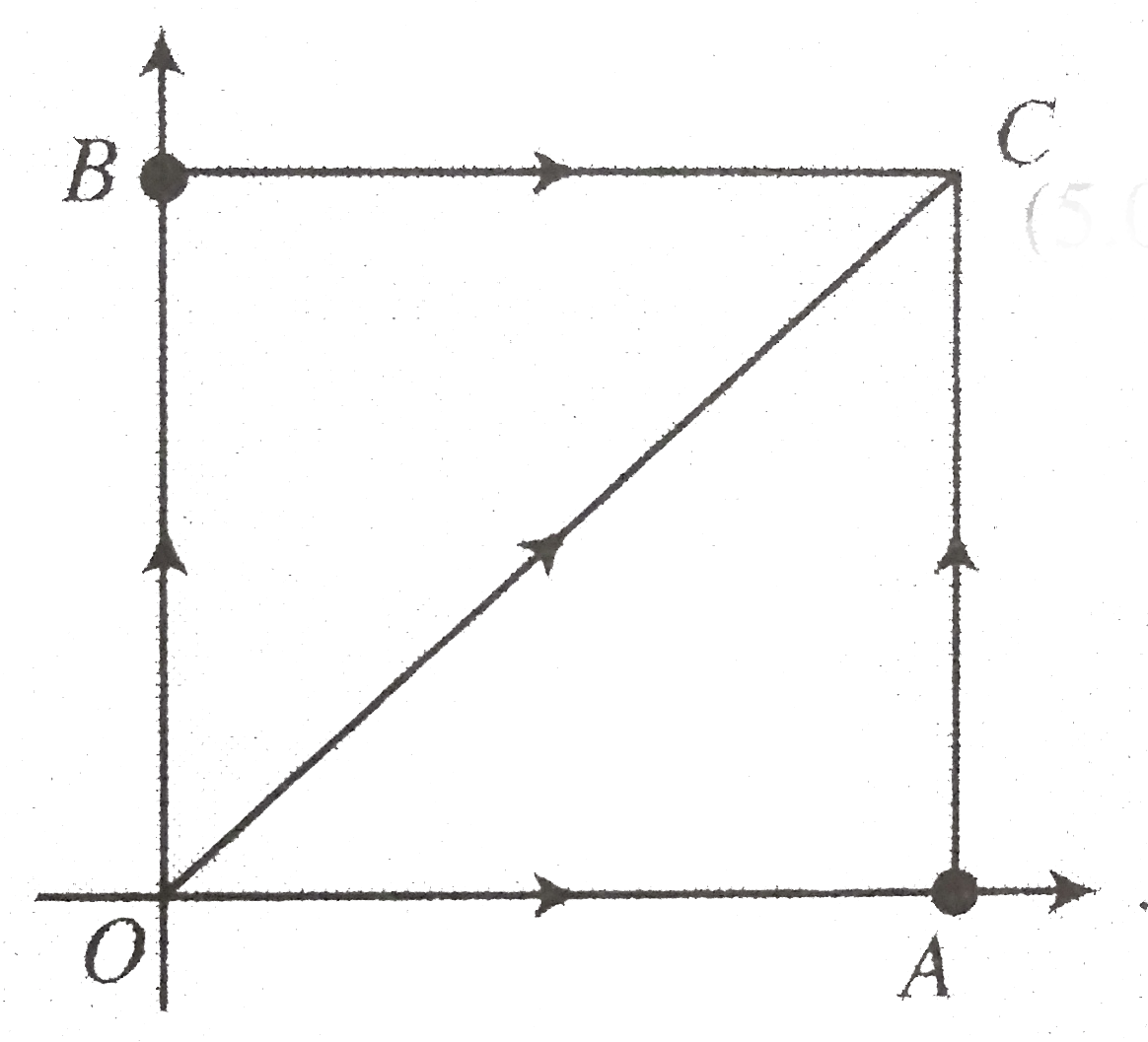A particle moves in x-y plane in figure under the influence of a friction force with magnitude 3.00N and acting in the direction opposite to the particle's displacement. Calculate the work done by the friction force on particle as it moves along the following paths: (a) path OA followed by AC (b) path OA followed by AC and the return path CO, (c) path OC followed by the return path CO, and (d) each of your three answers should be non-zero. What is the significant of this observation?

Along each step of motion, the frictional force is opposite in direction to the incremental displacement, so in the work cos180∘=−1
a. W=(3N)(5m)(−1)+(3N)(5m)(−1)=−30.0J
b. The distance CO is (52+52)1/2m=7.07m
W=(3N)(5m)(−1)+(3N)(5m)(−1)+(3N)(7.07m)(−1)
=−51.2J
c. W=(3N)(7.07m)(−1)+(3N)(7.07m)(−1)=−42.4J
d. The force of friction is a non-conservative force.
Topper's Solved these Questions
- WORK, POWER & ENERGYBOOK - CENGAGE PHYSICS ENGLISHCHAPTER - WORK, POWER & ENERGYEXERCISE - Exercise 8.3
26 Videos
- WORK, POWER & ENERGYBOOK - CENGAGE PHYSICS ENGLISHCHAPTER - WORK, POWER & ENERGYEXERCISE - Exercise 8.4
16 Videos
- WORK, POWER & ENERGYBOOK - CENGAGE PHYSICS ENGLISHCHAPTER - WORK, POWER & ENERGYEXERCISE - Exercise 8.1
25 Videos
- VECTORSBOOK - CENGAGE PHYSICS ENGLISHCHAPTER - VECTORSEXERCISE - Exercise Multiple Correct
5 Videos
Similar Questions
A particle is moving under the influence of a force which is fixed in magnitude and acting at an angle θ in the direction of motion. The path described by the particle is
View SolutionA particle moving along a circular path due to a centripetal force having constant magnitude is an example of motion with :
View Solution
Knowledge Check
A particle moves in a plane with a constant acceleration in a direction different from the initial velocity. The path of the particle is
Astraight lineBarc of circleCparabolaDellipse
Shown that work done by a conservative force on a particle moving between two points is path independent.
View SolutionWhat determines the nature of the path followed by the particle
View SolutionA particle travels from A to B path shown in figure, then the displacement of particle is :
 .
.
View SolutionFor the path of a charged particle math the following.

View SolutionWhen a force of constant magnitude in a fixed direction acts on a moving object, then its path is -
View SolutionA particle moves in a circular path with a uniform speed. Its motion is
View SolutionA particle is moving in a circular path of radius r under the action of a force F. If at an instant velocity of particle is v, and speed of particle is increasing, then
View Solution
